Heavenly Beauty: Discovering Singapore’s Religious Diversity
Tiny Singapore is home to a wide range of religions – including Christianity, Hindu, Islam, and Buddhism – and its houses of worship are just as diverse. Nomad Ronan shares seven of Singapore’s most fascinating and beautiful religious structures, and the best ways to experience them.
 Photo © Ronan O'Connell
Photo © Ronan O'Connell
In a tiny city-state in Southeast Asia, mosques sit alongside Catholic churches, Taoist temples, Hindu shrines, Protestant cathedrals, Buddhist temples, and Armenian Orthodox churches. Singapore is populated by people from a wide range of religions, which have long co-existed in relative peace. Here are seven of Singapore’s most attractive and important religious structures.
- St Andrew’s Cathedral (Protestant)
- Sultan Mosque (Islam)
- Thian Hock Keng Temple (Taoist)
- Sri Mariamman Temple (Hindu)
- Al-Abrar Mosque (Islam)
- Buddha Tooth Relic Temple (Buddhist)
- Armenian Apostolic Church of St Gregory the Illuminator (Oriental Orthodox)
St Andrew’s Cathedral (Protestant)
Singapore is home to 5.9 million people, with about 74% of those having Chinese ancestry, followed by Malay (13%) and Indian (9%). Yet this city is renowned for its many stately churches due to the heavy influence of the British, who introduced Christianity when they colonized Singapore from 1826 until 1963 (not including 1942 to 1945 when it was occupied by Japan) when it became part of Malaysia before gaining independence in 1965.
As an avid fan of stained-glass design, I was beguiled by the interior of Singapore’s largest cathedral, St Andrew’s. The sun is ferocious in Singapore, and as its rays shone through this Gothic cathedral’s intricately decorated glass windows, I was bathed in a palette of bright colors.
This building is just as striking from the outside, thanks to its white-washed façade, complex stonework, and lofty spire. It’s open to visitors from 9am to 4pm each day, and free guided tours can be booked on the St Andrew’s website.
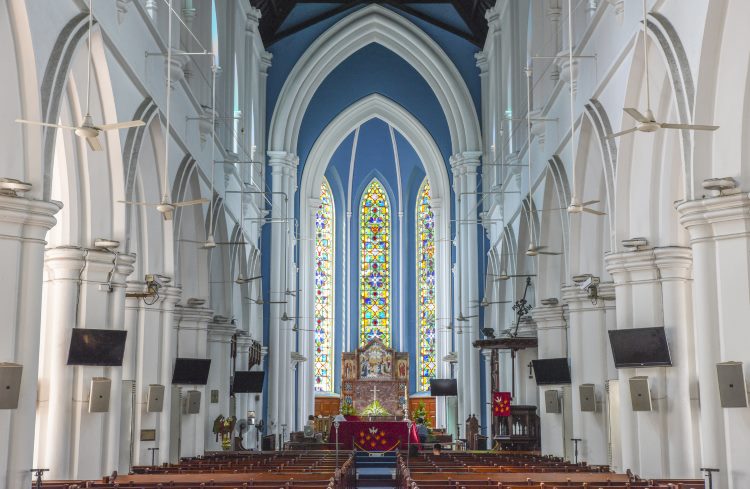
Sultan Mosque (Islam)
Before Singapore became a British colony, for centuries it was predominantly Islamic, controlled at various times by Malay and Indonesian kings. It’s fitting then, that Singapore’s oldest neighborhood is Kampong Glam, the former headquarters of a Malay Islamic dynasty.
This dynasty’s former palace is now home to the Malay Heritage Centre, which is just 200ft (60m) away from Singapore’s most important and spectacular mosque, the Sultan Masjid. I was entranced by the way the sun glinted off this mosque’s two giant gilded domes, rising above rows of ornate arched windows.
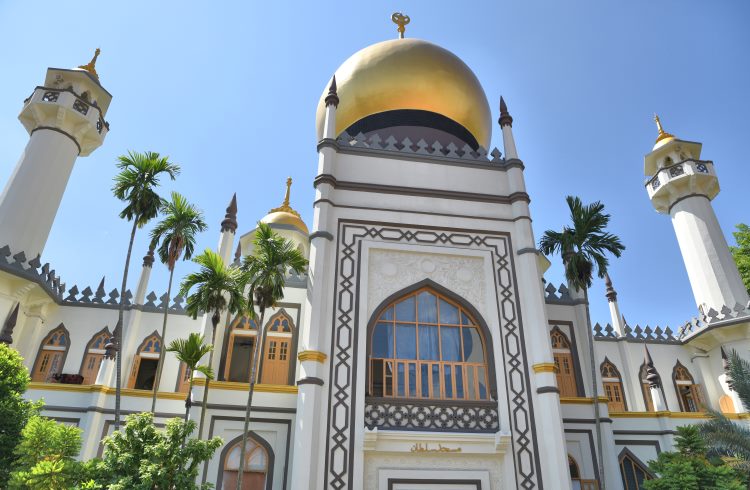
Both of those features are key elements of the mosque’s Indo-Saracenic architecture, a brilliant blend of European Gothic and Indian Mughal designs pioneered by British architects in the 1800s. The best time to visit this mosque is during the Islamic holy month of Ramadan when it is surrounded by a night market. To help visitors adhere to the mosque’s dress code, long robes can be borrowed at its entrance.
Thian Hock Keng Temple (Taoist)
Britain’s colonization of Singapore prompted an influx of Chinese migrants, who soon became the nation’s dominant ethnic group. They brought with them the ancient Taoist religion, which has been practiced in China for 1,900 years. Having visited dozens of Taoist sites across Asia, I was familiar with the religion’s fearsome “door gods” painted on the wooden entrance to Thian Hock Keng Temple.
This was Singapore’s first Chinese temple and is devoted to Mazu, the Taoist Goddess of the Sea. The first waves of Chinese to move to Singapore would come here to honor Mazu for shepherding them safely across the ocean from their motherland. It remains a functioning temple, as about 10% of Singapore’s population is Taoist.
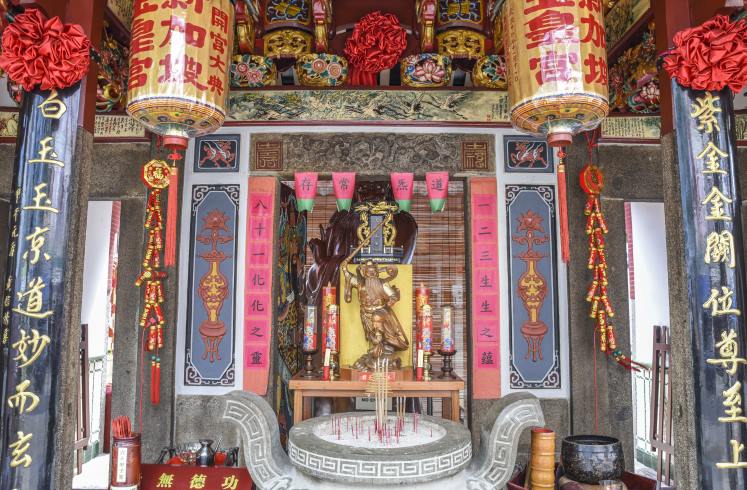
Thian Hock Keng is also a popular tourist attraction due to its majestic, traditional Chinese architecture, embellished by a curved, multi-tiered roof, decorative eaves, and vibrant murals. During the week-long Chinese New Year festival visitors can watch as worshippers offer fortune rice buckets to the spirit of the Jade Emperor.
Sri Mariamman Temple (Hindu)
I am being looked down on by a crowd of Hindu gods, kings, and queens sculpted on the stone Gopuram tower that marks the entrance to Sri Mariamman Hindu temple. There are about 300,000 Hindus in Singapore, most of whom are ethnically Indian.
While the hub of this community is Little India, a vibrant neighbourhood 1.8mi (3km) north of Sri Mariamman, its heart beats in this temple, Singapore’s oldest Hindu place of worship. Built in the 1860s by skilled craftsmen from southern India, this large complex is emblazoned with color.
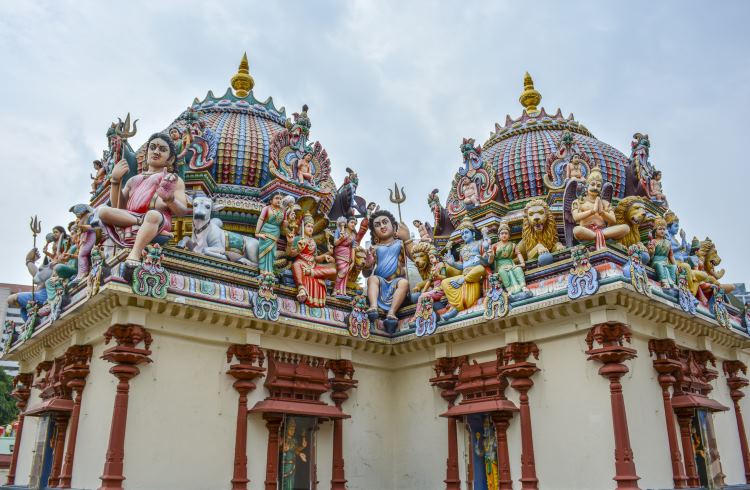
The temple’s walls and ceilings are splashed by vivid murals which variously depict Hindu deities and religious motifs like the Sri Yantra, a stunning geometric pattern used as an aid in reaching a meditative state. The temple becomes even more visually arresting during the annual Firewalking Festival, held the week before Diwali, when worshippers prove their devotion by crossing barefoot over a bed of burning embers.
Al-Abrar Mosque (Islam)
Shaded by gleaming skyscrapers in Singapore’s Chinatown district, I happened on a small cream-coloured building with two thin minarets topped by the Crescent and Star, a recognisable symbol of Islam. This is Al-Abrar mosque, one of the oldest intact structures in Singapore.
A protected national monument, it was originally constructed in 1827 as a thatched hut. In the 1850s it was rebuilt in its present form as the hub of Islamic prayer for Singapore’s Indian Muslims. After the British took control of Singapore, many Muslims from southern India migrated here and worked in Chinatown as traders and money changers. This mosque is open from 10am-6pm and visitors are asked to dress appropriately – long pants for men, and loose clothing that covers the legs and arms for women.
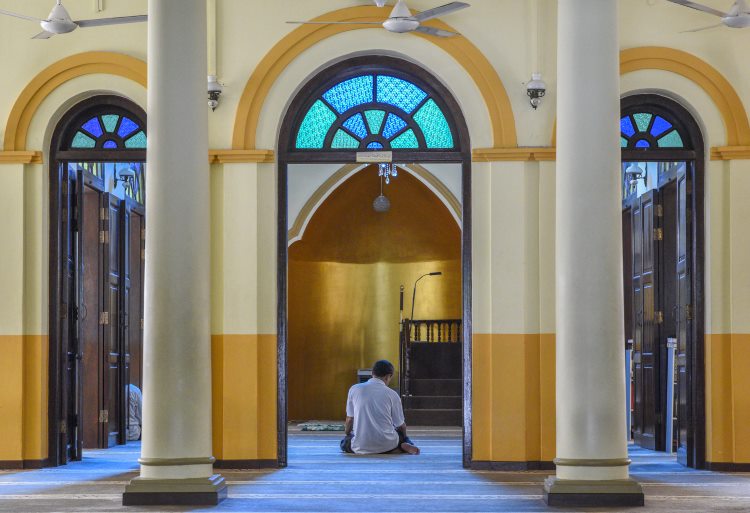
Buddha Tooth Relic Temple (Buddhist)
Singapore’s pleasing religious diversity was never more evident than when I walked down South Bridge Road, in Chinatown, and in quick succession passed Chulia Mosque, Sri Mariamman Hindu temple, and then Buddha Tooth Relic Temple. Buddhism is the most common religion in Singapore and this is the faith’s most-visited temple.
Unlike every other building on this list, Buddha Tooth Relic Temple is not historic – it was only built in 2007. What attracts so many tourists is its ostentatious appearance, and the extraordinary artefact that gives the temple its name.
Drenched in red and gold, the two most fortuitous colors in Chinese culture, and embellished by hundreds of statues of Buddha, this temple is incredibly photogenic. It is also home to a tooth of Lord Buddha, who died more than 2,000 years ago. That rare relic is displayed inside a massive stupa decorated by 700lbs (318kg) of gold. On the Singaporean public holiday of Vesak Day, each May, Buddhists flock to this temple to join large and fascinating religious ceremonies.
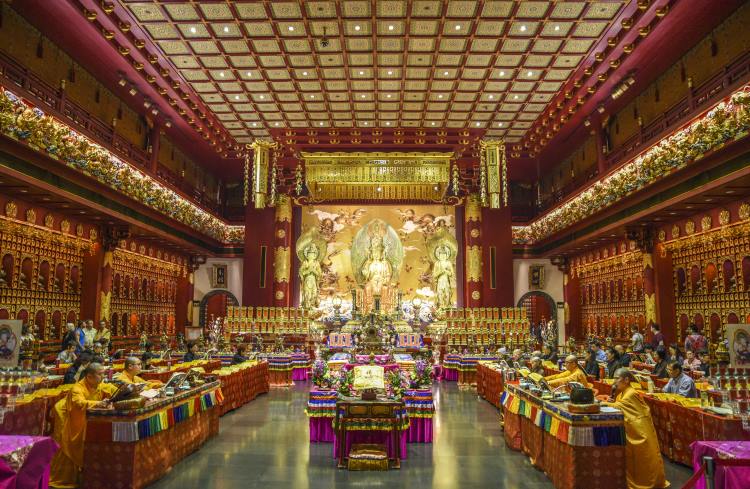
Armenian Apostolic Church of St Gregory the Illuminator (Oriental Orthodox)
While walking towards Singapore’s picturesque Fort Canning Park, I passed a surprising sign informing me the graceful church behind it is dedicated to the Armenian Apostolic faith, a branch of the Oriental Orthodox church of Christianity.
Not only had I never seen an Armenian Apostolic church, but I was unaware of Singapore’s rich Armenian history. As Singapore became a major trading hub in the first half of the 1800s, many Armenians migrated here to open businesses. This later included the Sarkies brothers, who in the late 19th century founded several of the first five-star hotels in Southeast Asia, including Singapore’s world-famous Raffles Hotel.
The Armenian community built this church in the 1830s in the name of St Gregory, the patron saint of Armenia’s national religion. Its architecture is traditionally Armenian, with a stark white exterior decorated by a thin, lofty spire, a large portico, and soaring Doric columns.
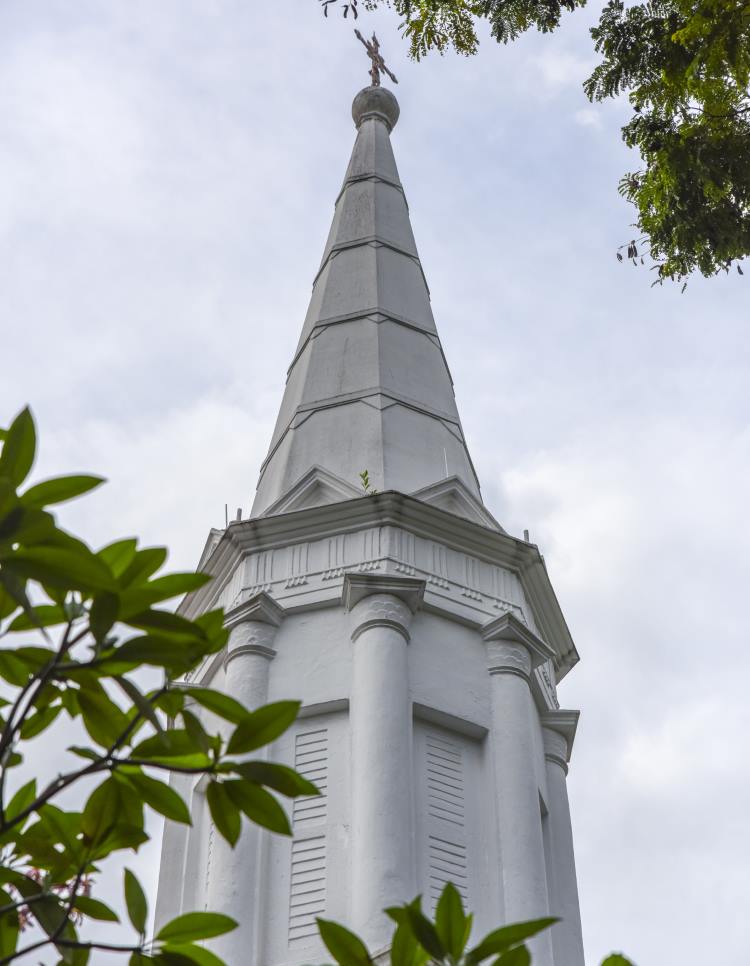
The church’s small prayer hall is illuminated by more than 20 arched windows and doorways. To see this building in a completely different light, visit during the annual Singapore Night Festival in August, when it’s draped in LED bulbs and neighboring Armenian Street becomes a hub of live entertainment.
Related articles
Simple and flexible travel insurance
You can buy at home or while traveling, and claim online from anywhere in the world. With 150+ adventure activities covered and 24/7 emergency assistance.
Get a quote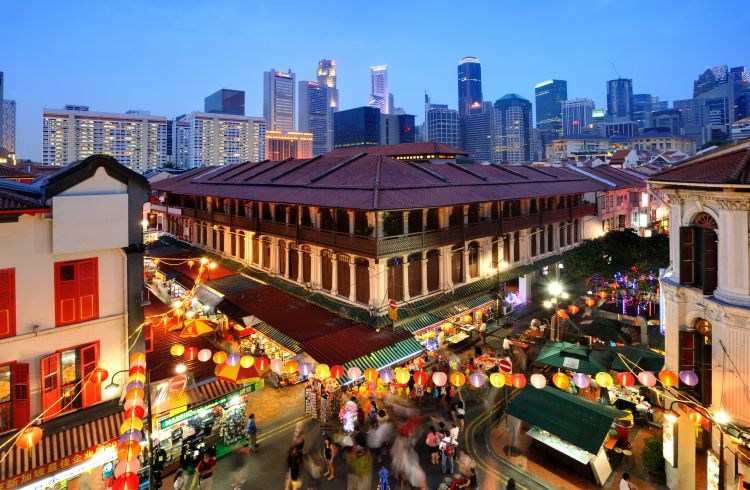

No Comments